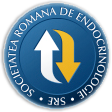
- Login
- Register
- Home/Current Issue
- About the journal
- Editorial board
- Online submission
- Instructions for authors
- Subscriptions
- Foundation Acta Endocrinologica
- Archive
- Contact
 Romanian Academy
Romanian Academy
 The Publishing House of the Romanian Academy
The Publishing House of the Romanian Academy

ACTA ENDOCRINOLOGICA (BUC)
The International Journal of Romanian Society of Endocrinology / Registered in 1938in Web of Science Master Journal List
Acta Endocrinologica(Bucharest) is live in PubMed Central
Journal Impact Factor - click here.

-
Endocrine Care
Ge J, Guo X, Zhao W, Zhang R, Bian Q, Luo L, Linlin X, Yao X
Evaluation of Pre-Ablation NLR and LMR as Predictors of Distant Metastases in Patients with Differentiated Thyroid CancerActa Endo (Buc) 2023 19(2): 215-220 doi: 10.4183/aeb.2023.215
AbstractObjective. This research aim was to evaluates the role of the pre-ablation neutrophil-to-lymphocyte ratio (NLR) and lymphocyte-to-monocyte ratio (LMR) as predictors of distant metastases in patients with differentiated thyroid cancer (DTC). Methods. A retrospective analysis was given to 140 patients with DTC who received 131I remnant ablation after surgery. The patients were divided into two groups based on the existence of distant metastasis. Results. The two groups showed no significant difference in age, gender, WBCs, neutrophils, monocytes, eosinophils, basophils and whether the tumor was multifocal. In the univariate analysis, significant differences were found in tumor size (p=0.021), lymphocyte (p=0.012), NLR (p=0.027), and LMR (p=0.007). According to the ROC curves, NLR had an AUC of 0.612 ± 0.097 with a cut-off value of 1.845, sensitivity of 60.0%, and specificity of 66.2% (p=0.027). LMR had an AUC of 0.638 ± 0.095 with a cutoff value of 4.630, sensitivity of 84.6%, and specificity of 35.4% (p=0.007). In the multivariate analysis, larger tumor size (OR=5.246, 95% CI 1.269-10.907, p=0.009) and higher NLR (OR=2.087, 95% CI 0.977-4.459, p=0.034) were statistically significant for distant metastases. Conclusion. This research reveals that pre-ablation NLR and tumor size are significantly statistically correlated with distant metastases in patients with DTC. -
Clinical review/Extensive clinical experience
Pratama KG, Tandarto K, Hengky A
Weight Loss Effect of Sodium-Glucose Cotransporter-2 (SGLT2) Inhibitors in Patients with Obesity without Diabetes: a Systematic ReviewActa Endo (Buc) 2022 18(2): 216-224 doi: 10.4183/aeb.2022.216
AbstractContext. Obesity is a chronic disorder with excessive accumulation and hypertrophy of adipose cells. Selective sodium-glucose cotransporter-2 (SGLT2) Inhibitor has shown an effect of weight loss in several studies. However, weight loss in patients with obesity without diabetes remains unclear. Objective. This systematic review aims to address the weight loss effects of SGLT 2 inhibitors in obese subjects without diabetes. Methods. We incorporated search engines from Pubmed, EBSCO host, and Proquest. The inclusion criteria for this research were full-text, written in English, written in Bahasa Indonesia, reported the effect of SGLT 2 inhibitors for weight loss in obese patients, the design of the studies, outcomes, and the results of the study. We created a data extraction table to gather the required data for the review. The exclusion criteria for this study were incomplete outcomes, not full-text studies, case reports, literature review, and irrelevant studies. Results. A total of 451 studies were identified from research database. There are 7 studies eligible to be included in this review. Weight loss effects of SGLT2 Inhibitors were observed in all the studies included in this review. Conclusion. SGLT2 inhibitor is an effective weight loss therapy in patients with obesity without diabetes. -
Editorial
Gasparik A, Demian MB, Pascanu I
Romanian Translation and Validation of the SARC-F QuestionnaireActa Endo (Buc) 2020 16(2): 216-222 doi: 10.4183/aeb.2020.216
AbstractContext. Several studies have addressed the impact of sarcopenia on various health outcomes. As the most critical issue is the early identification of individuals, a short screening tool may help clinicians to simply test for sarcopenia and start early management of the disease. Recently, a simple questionnaire, Sarc-F was provided that may adequately realize this aim. Subjects and Methods. To validate the questionnaire we translated the original Sarc-F according to the recommended methodology. A total of 80 people, aged 65+ were evaluated for sarcopenia. Muscle mass, strength, and physical performance were measured. Volunteers completed the Sarc-F as well as other two questionnaires. Discriminative power, reliability, construct validity analyses, specificity, sensitivity, negative and positive predictive value evaluations were made. Results. A good discriminative power and internal consistency were found. With the functional sarcopenia diagnostic criteria the test demonstrates a high specificity (84%). The positive and negative predictive values were: 78% and 77%. Using the more conservative diagnostic criteria the negative predictive value was: 85.4%, sufficient to rule out those not at risk of having sarcopenia and eliminate the need for further investigations. Conclusions. A valid Romanian Sarc-F questionnaire is now available to simply detect patients at risk/no risk of sarcopenia. -
Endocrine Care
Pandzic Jaksic V, Majic A, Rezic T, Andric J, Jaksic O, Zrilic A, Marusic S
Primary Hyperparathyroidism Detected by Parathyroid Incidentaloma: Clinical Features, Work-up and ManagementActa Endo (Buc) 2021 17(2): 219-225 doi: 10.4183/aeb.2021.219
AbstractContext. With the widespread use of neck ultrasound, parathyroid incidentaloma (PI) emerges as an additional opportunity for incidental detection of primary hyperparathyroidism (PHPT). Objective and design. This study aimed to investigate PHPT cases detected by PI and to compare them with other PHPT patients. A retrospective analysis of newly diagnosed PHPT patients between 2014 and 2020 was conducted in our hospital. Subjects and methods. The cohort of 124 subjects was divided in two groups: 22 (17.7%) PHPT patients detected by PI (PI PHPT group) and the rest of 102 PHPT patients (non-PI PHPT group). Overall, 21 PIs were discovered on ultrasound and one was found during thyroid surgery. Clinical features, work-up and management of two study groups were compared. Results. The PI PHPT group had lower ionized calcium at diagnosis (p=0.034), lower peak serum calcium during follow-up (p<0.01), less fractures (p=0.022) and was less likely to meet the international criteria for parathyroidectomy (p<0.01). Positive sestamibi scan (p=0.022) and confirmed concordant localization in at least two different parathyroid imaging techniques (p=0.033) were more likely in the PI PHPT group. The frequency of surgical management did not differ between groups. Conclusions. PHPT detected by PI is clinically relevant and mostly comparable to PHPT in other patients with some features that correspond more often to a mild disease. Higher rate of positive preoperative localization in PHPT detected by PI might encourage parathyroidectomy even without the international criteria met. -
Endocrine Care
Motas N, Motas C, Davidescu M, Achim D, Rus O, Jianu E, Horvat T
Neuroendocrine Tumors of the Lung With Surgical Resection and Lymph Node Dissection in a Tertiary Thoracic Surgery CenterActa Endo (Buc) 2018 14(2): 219-226 doi: 10.4183/aeb.2018.219
AbstractContext. Management of neuroendocrine tumors is highly dynamic, in both diagnosis and treatment. Objective. Surgical resection with lymph node approach offers excellent 5-years survival. Design. Between 2008 and 2011 we operated with radical intent 326 lung cancers. Patients and Methods. Cases without lymph node approach were excluded. We found 38 neuroendocrine malignancies: 12 typical carcinoids, 3 atypical carcinoids, 4 large cell neuroendocrine carcinomas (LCNEC) and 10 small-cell lung cancers (SCLC). Limits of the study are: variable lymphadenectomy technique; absence of PET - CT and EBUS-TBNA (EndoBronchial UltraSound - TransBronchial Needle Aspiration) for staging; incomplete data for disease-free survival. Results. We performed 13 pneumonectomies, 22 lobectomies and 3 non-anatomical resections. There were 5 bronchoplasties. The 5-year survival difference between NSCLC (non-small-cell lung cancer - 42.9%) and SCLC (40.53% - one of the best from the literature) is not statistically significant (p=0.4780). Five-years survival was 100% for typical and atypical carcinoids – the best published. We found lymph node metastasis in 2 typical carcinoids, in 2 atypical carcinoids and in 6 SCLCs. Conclusions. For typical and atypical carcinoids, radical resection with lymphadenectomy offers 100% 5-years survival. Early-stage SCLC may benefit from radical resection; lymph node dissection is mandatory because of the well-known precocious lymphatic dissemination. -
Endocrine Care
Galoiu S, Ioacara S., Baciu I. , Coculescu M
Reduced Life Expectancy in Women with Nonfunctioning Pituitary Adenomas and Concomitant HypopituitarismActa Endo (Buc) 2013 9(2): 219-228 doi: 10.4183/aeb.2013.219
AbstractAims. Earlier studies suggested that patients with nonfunctioning pituitary adenoma (NFPA) experience premature mortality, mostly from vascular diseases. The present study aims to identify risk factors associated with mortality in patients with NFPA. Methods. All consecutive patients admitted to a tertiary neuroendocrinology center for pituitary adenoma during 2001-2010 were screened. Only those with a final diagnostic of NFPA were retained. All 196 NFPA subjects (57.7% males, mean age 52.7±0.9 years) were followed-up for allcause mortality until December 31, 2011 (1298 person-years of follow-up). PAMCOMP software was used to calculate standardized mortality ratio (SMR), using the corresponding general population as reference. Cox regression analysis evaluated the independent hazards for mortality. Results. There were 26 deaths among 196 patients as compared to 20 expected. Standard Mortality Ratio (SMR) was 1.2 (95% Confidence interval (CI) 0.83-1.86). Females had a doubled mortality ratio: SMR 2.03 (95%CI 1.01-3.64), but males had a mortality ratio similar with general population: SMR 0.87 (95%CI 0.48-1.44). More patients with hypopituitarism for at least one axis deceased (22/156, 14.10%), as compared with patients without pituitary failure (1/22 patient deceased –2.07%), p=0.03. Prednison replacement for corticotrophin insufficiency (HR 1.46 (95%CI 1.12-1.90)) was correlated to mortality in females, but not in males, and mortality rose progressively with prednison dose (log rank: p=0.01). In males, last known maximal pituitary tumour diameter (HR 1.04 (95%CI 1.001-1.08) and age at baseline (HR 1.1 (95%CI 1.05-1.1) were modestly related to mortality. Conclusions. Females with nonfunctioning pituitary adenomas and hypopituitarism had a reduced life expectancy as compared with general population, possibly related to glucocorticoid substitution or a more severe pituitary insufficiency. -
Case Report
Celik M, Ayturk S, Celik H, Can N, Kucukarda A, Sezer A, Guldiken S, Tugrul A
A Rare Clinical Presentation: A Patient with Chronic Renal Failure, Secondary Hyperparathyroidism and CalciphylaxisActa Endo (Buc) 2016 12(2): 219-223 doi: 10.4183/aeb.2016.219
AbstractCalciphylaxis, also known as calcific uremic arteriolopathy (CUA), is usually observed in women and it is a serious complication of hyperparathyroidism secondary to chronic renal failure. CUA is characterized by ischemic tissue loss secondary to progressive vascular degeneration. Although it is rare, it may end up with sepsis and organ failure and can be fatal. Its pathogenesis is not fully understood, but it is thought that it occurs secondary to increased calcification activators such as oxidized LDL, TNF- α, calcitriol, fibronectin, collagen-I, and TGF-1α. The most effective treatment is managing underlying pathology and decreasing serum calcium and phosphorus levels. In this report, we aimed to present an end stage renal failure case with coexisting hyperparathyroidism, hyperthyroidism and calciphylaxis in whom cutaneous manifestations were healed 6 months after parathyroidectomy. -
Case Report
Branisteanu DD, Galesanu C, Saviuc E, Lisnic N, Negru D, Bostaca T, Galesanu MR
One case of sellar and suprasellar chordomaActa Endo (Buc) 2005 1(2): 219-226 doi: 10.4183/aeb.2005.219
Abstract ReferencesWe describe one case of sellar and suprasellar chordoma found in a 44 year old female, with bitemporal hemianopsia and secondary amenorrhea, submitted to transfrontal surgery and telecobaltotherapy. Chordomas are slow growing neoplasms arising from notochordal remnants of the axial skeleton. The second most common site for chordomas, after the sacrococcygeal region, is the base of the skull. Skull base chordomas commonly result in cranial nerve deficits, such as blurred vision, facial weakness and swallowing difficulty. Occasionally, chordomas localized in the hypothalamic or pituitary region may lead to pituitary stalk disjunction, pituitary insufficiency and diabetes insipidus. Studies show that early diagnosis, combined with aggressive surgical resection, offers the best chance for long-term survival. Although optimal treatment consists of wide excision with adjuvant radiotherapy, skull base chordomas are rarely amenable to complete surgical removal. Traditionally, postoperative irradiation is delivered to doses of 6000-6500 cGy; however this approach controls the chordoma only for a few years. Prognosis depends on the histological grade of the tumor, atypical chordomas showing the lowest survival rate.1. Watkins L, Khudados ES, Kaleoglu M, Revesz T, Sacares P, Crockard HA. Skull base chordomas: a review of 38 patients, 1958-88. Br J Neurosurg 1993; 7(3):241-248. [CrossRef]2. Schechter MM, Liebeskind AL, Azar-Kia B. Intracranial chordomas. Neuroradiology 1974; 8(2):67-82. [CrossRef]3. Haridas A, Ansari S, Afshar F. Chordoma presenting as pseudoprolactinoma. Br J Neurosurg 2003; 17(3):260-262. [CrossRef]4. Kakuno Y, Yamada T, Hirano H, Mori H, Narabayashi I. Chordoma in the sella turcica. Neurol Med Chir (Tokyo) 2002; 42(7):305-308. [CrossRef]5. Thodou E, Kontogeorgos G, Scheithauer BW, Lekka I, Tzanis S, Mariatos P, Laws ER Jr. Intrasellar chordomas mimicking pituitary adenoma. J Neurosurg 2000; 92(6):976-982. [CrossRef]6. Lee HJ, Kalnin AJ, Holodny AI, Schulder M, Grigorian A, Sharer LR. Hemorrhagic chondroid chordoma mimicking pituitary apoplexy. Neuroradiology 1998; 40(11):720-723. [CrossRef]7. Kikuchi K, Watanabe K. Huge sellar chordoma: CT demonstration. Comput Med Imaging Graph 1994; 18(5):385-390. [CrossRef]8. Pinzer T, Tellkamp H, Schaps P. Intracranial chordoma. Case report of a destructively growing chondroid chordoma in the area of the sella turcica. Zentralbl Neurochir 1993; 54(3):133-138.9. Kagawa T, Takamura M, Moritake K, Tsutsumi A, Yamasaki T. A case of sellar chordoma mimicking a non-functioning pituitary adenoma with survival of more than 10 years. Noshuyo Byori 1993; 10(2):103-106.10. de Cremoux P, Turpin G, Hamon P, de Gennes JL. Intrasellar chordoma. Sem Hop 1980 18-25; 56(43-44):1769-1773.11. Johnsen DE, Woodruff WW, Allen IS, Cera PJ, Funkhouser GR, Coleman LL. MR imaging of the sellar and juxtasellar regions. Radiographics 1991; 11(5):727-758.12. Kachhara R, Nair S, Gupta AK, Radhakrishnan VV, Bhattacharya RN. Infrasellar craniopharyngioma mimicking a clival chordoma: a case report. Neurol India 2002; 50(2):198-200.13. Wanibuchi M, Uede T, Ishiguro M, Tatewaki K, Kurokawa Y, Yoshida Y. A case of suprasellar intradural chordoma. No Shinkei Geka 1994; 22(3):269-272.14. Couldwell WT, Weiss MH, Rabb C, Liu JK, Apfelbaum RI, Fukushima T. Variations on the standard transsphenoidal approach to the sellar region, with emphasis on the extended approaches and parasellar approaches: surgical experience in 105 cases. Neurosurge [CrossRef]15. Wang RZ, Ren ZY, Su CB, Yang Y, Tao W, Ma WB, Yin J. Extended transsphenoidal approach to giant tumors in sellar and clival area. Zhonghua Yi Xue Za Zhi 2004; 84(20):1693-1697.16. Zhang YZ, Wang CC, Gao XH, Liu PN, He Y, Piao MX. Clinical application of minimally invasive neuroendoscopic techniques. Zhongguo Yi Xue Ke Xue Yuan Xue Bao 2005; 27(1):22-25.17. Krishnan S, Foote RL, Brown PD, Pollock BE, Link MJ, Garces YI. Radiosurgery for cranial base chordomas and chondrosarcomas. Neurosurgery 2005; 56(4):777-784 [CrossRef]18. Radner H, Katenkamp D, Reifenberger G, Deckert M, Pietsch T, Wiestler OD. New developments in the pathology of skull base tumors. Virchows Arch 2001; 438(4):321-335. [CrossRef]19. Kakuno Y, Yamada T, Hirano H, Mori H, Narabayashi I. Chordoma in the sella turcica. Neurol Med Chir (Tokyo) 2002; 42(7):305-308. [CrossRef]20. Krengli M, Liebsch NJ, Hug EB, Orecchia R. Review of current protocols for protontherapy in USA. Tumori 1998; 84):209-216.21. Sims E, Doughty D, Macaulay E, Royle N, Wraith C, Darlison R, Plowman PN. Stereotactically delivered cranial radiation therapy: a ten-year experience of linac-based radiosurgery in the UK. Clin Oncol (R Coll Radiol) 1999; 11(5):303-320. [CrossRef] -
Endocrine Care
Orasan R, Awon R, Racasan S, Patiu IM, Samasca G, Kacso IM, Gherman Caprioara M
Effects of L-Carnitine on Endothelial Dysfunction, Visfatin, Oxidative Sterss, Inflammation and Anemia in Hemodialysis PatientsActa Endo (Buc) 2011 7(2): 219-228 doi: 10.4183/aeb.2011.219
AbstractBackground Supplementation of Lcarnitine is associated with improvement in some abnormalities present in hemodialysis (HD) patients. Objective. The study aim was to analyze the effect of oral L-carnitine supplementation on endothelial dysfunction (ED), oxidative stress (OS), inflammation and anemia in HD patients. Design. A prospective, longitudinal and observational study was performed in a single dialysis unit. Subjects and methods.We studied 31 HD patients: 21 patients formed the Lcarnitine supplementation group (group 1) and 10 entered the control group (group 2). At baseline and after 3 months of L-carnitine supplementation (500mg/day) we determined endothelial-dependent flow-mediated vasodilatation (FMD) and nitroglycerin induced endothelium independent vasodilatation, involving ultrasonographic brachial artery measurements, serum visfatin, malondialdehyde, body mass index, systolic blood pressure, diastolic blood pressure, interdialytic body weight gain, C-reactive protein, albumin, cholesterol, HDL-cholesterol, LDL-cholesterol, triglycerides, ferritin, transferrin saturation, hemoglobin, erythropoietin dose, calcium (Ca), phosphorus (P), parathormone and Kt/V . Results. In group 1, FMD (8.9 (4.5-12.5) to 10.6 (6.7-18), p=0.04) and Ca (8.4±0.6 to 8.8±0.5 mg/dL, p<0.001) significantly increased after L-carnitine supplementation, while visfatin (1.0 (0.2-1.3) to 0.4 (0-0.9) pg/mL, p=0.03), malondialdehyde (2.8 (2.4- 3.2) to 1.3 (1.2-1.5) nmol/mL, p<0.001) and P (5.6±1.3 to 5.0±1.2 mg/dL, p=0.005) significantly decreased. Albumin increased significantly in both groups (3.9±0.3 to 4.2±0.3 mg/dL, p<0.001 in group 1 and 3.7±0.3 to 4.0±0.3 mg/dL, p=0.02 in group 2). There were no other significant variations of the studied parameters. Conclusions. L-carnitine supplementation reduces ED, visfatin levels and markers of OS, but has no effect on inflammation, nutrition and anemia in HD patients. -
Endocrine Care
Pricop C, Branisteanu D, Gatu A, Velicescu C, Ungureanu D, Mogos V, Serban L,, Serban DN
Particularities of Bone Metabolism and Calcium Regulators in a Group of Young Males with Idiopathic Hypercalciuria and Relapsing Kidney LithiasisActa Endo (Buc) 2014 10(2): 220-227 doi: 10.4183/aeb.2014.220
AbstractBackground. Idiopathic hypercalciuria is a risk factor for nephrolithiasis. Both renal stones and hypercalciuria are associated with lower bone mineral density (BMD), but the relationship between these modifications is not completely understood. Aims. To evaluate some metabolic particularities possibly related to relapsing nephrolithiasis (RN) in young male patients. Methods. We performed a crosssectional study including a group of 30 young male patients with RN and a group of 30 healthy, age and BMI (body mass index) matched controls (CTR). We evaluated calcium and phosphate metabolism, bone remodeling markers alkaline phosphatase (AP) and osteocalcin in serum and 24-hour urine samples, and lumbar and hip BMD. Results. We observed higher values of serum calcium (P<0.05) and 24 hour urinary calcium (P<0.001) in the RN group. Parathyroid hormone (PTH) and AP were also higher in the RN group (P<0.01), whereas serum 25OH-D3 was lower (P<0.01). BMD, T and Z scores were lower in the RN group in both the lumbar (P<0.01) and hip (P<0.05) regions. Conclusions. Young male patients with hypercalciuric RN have lower BMD and higher bone turnover. Higher PTH levels related to vitamin D deficiency may contribute to bone demineralization in certain cases.